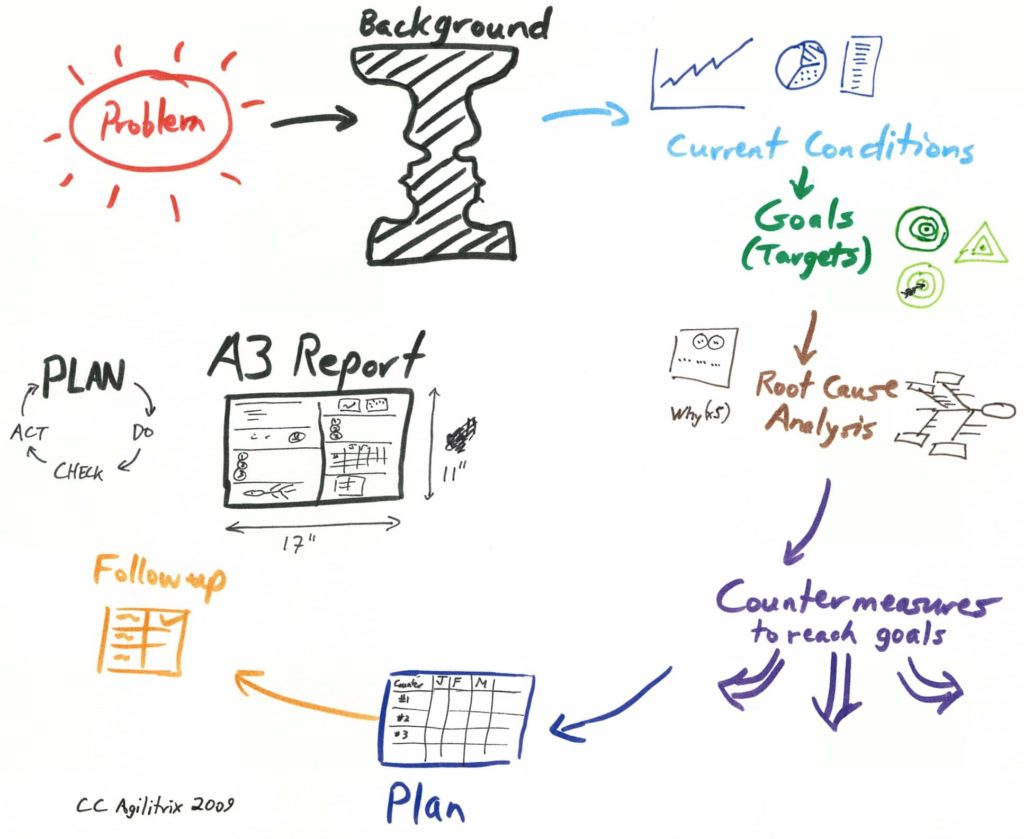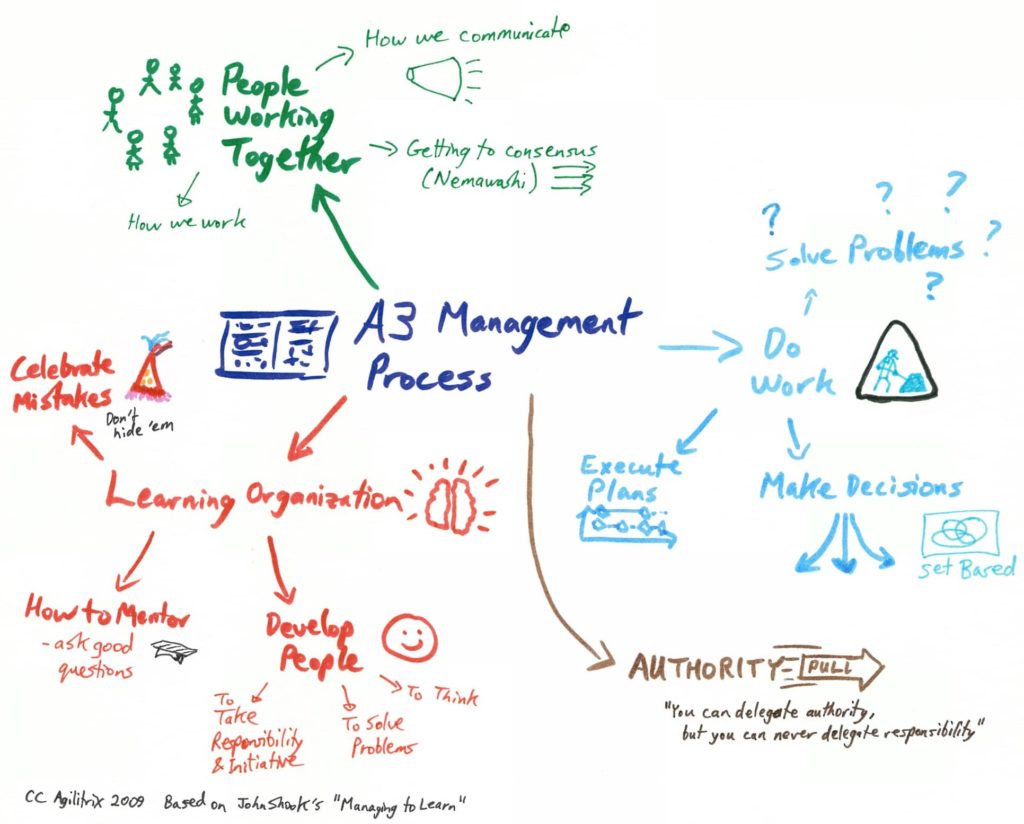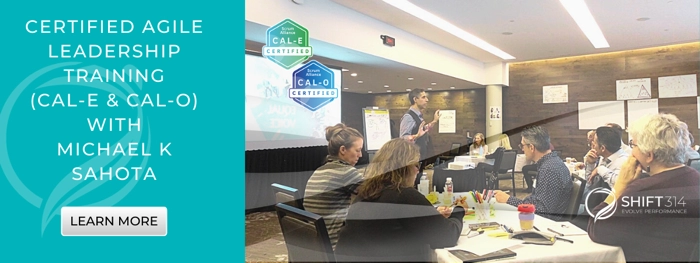This post shows the A3 technique and how it is an effective management tool.
The contents of this post are my summary of THE BOOK on this subject: Managing to Learn: Using the A3 Management Process to solve problems, gain agreement, mentor and lead – by John Shook. Available via Lean Enterprise Institute and Ocapt (in Canada).
Why A3?
Over the last year, I have used A3 to solve serious problems myself as well as with clients that I am coaching. I am blown away by how effective it is. I think of it as the howitzer (big gun) of problem solving and use it for complex problems.
Root cause analysis tools are very helpful, however, do not provided a context for resolving problems. A3 is a complete process. If you are not familiar with root cause analysis, see my related blog post.
What is an A3 anyway?
As shown in the middle of the diagram below, A3 is the name for a large sheet of paper (17″ x 11″). With the A3 technique, it is filled up with useful information. Space is intentionally limited to make sure only the most relevant information is shared. At Toyota, the A3 report is used to drive company decisions from shop floor to senior management.

Let’s walk through the sections:
- Problem – What is the problem that is causing problems? Also, give attention to the title as the summary.
- Background – How did you decide to work on this problem? What is business problem?
- Current Conditions – Describe the current conditions with visuals and numerical data that you have analyzed.
- Goals/Targets – What is the desired target state? This is the place to use SMART goals.
- Root Cause Analysis – What are the underlying causes? Use ask why five times and fishbone diagram.
- Countermeasures – How will you reach goal state? What activities can be identified that will address root causes and how were the best ones selected?
- Plan – What is the plan for getting there? When will the countermeasures be implemented?
- Follow Up – What were the results of deploying the countermeasures? Now that there is new information, it is time to revisit the A3.
You may have noticed that this is an elaborated version of PDCA – Plan Do Check Act. This is the heartbeat of a learning organization.
It takes time and effort to complete an A3. Weeks not days. Use when appropriate.
Tips: Experts strongly recommend using real paper. Yes, you will need to re-write; editing is a good thing. A wiki is great for details, but not for thinking and summarizing.
A3 to gain agreement, mentor and lead
In this section, I want to share how the A3 technique is a powerful management tool. Consider the following diagram:

A3 is about people working together to solve problems. The Japanese word Nemawashi is about going to the roots to reach consensus and alignment in a deep way. An A3 changes the way we work and communicate with each other. When meetings start by reviewing the parts of the A3 that have been completed, there is great focus on the remaining work. I have also seen new project participants brought up to speed very rapidly.
At Toyota, the A3 is used to do work. It is used to solve problems, make (set-based) decisions and execute plans.
Lean is famous for using pull to deliver the right part at the right time at the right place. With A3, the person driving the change effort can pull authority by working with other people and demonstrating leadership. It is chilling to see this work. I was coaching a junior analyst to put together an A3 on a production problem. When the issue escalated, the VP recognized the analyst as the expert and asked him to tell people what to do to fix the problem even though he had no formal or informal leadership role.

Finally, the A3 can be used to build a learning organization. One key aspect is to celebrate mistakes. This is also common with building an innovation culture through Improv or theatre techniques. At Toyota, it is used to develop people by helping them think for themselves to solve problems. A manager’s job is to build people and mentoring people on the A3 is a great way to do it. (Like a self-organizing team, but on an individual scale.)
I wish I had a real A3 to share, but the better ones I have are client confidential.
If you want to learn more, I urge you to buy the book or check out webinar on Managing to Learn.


